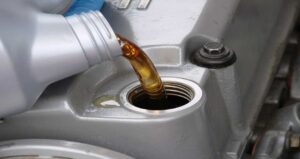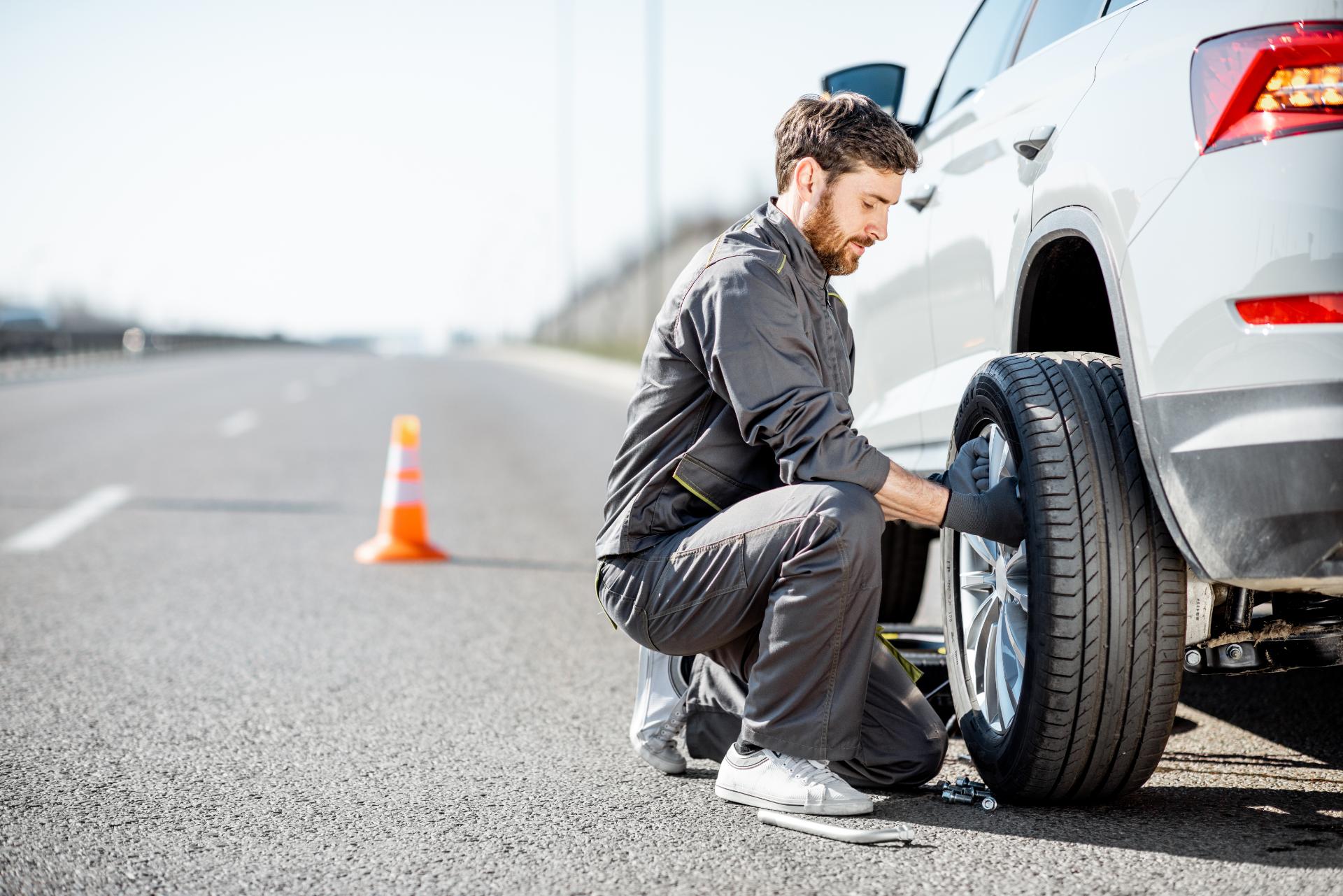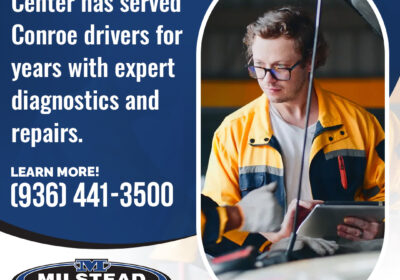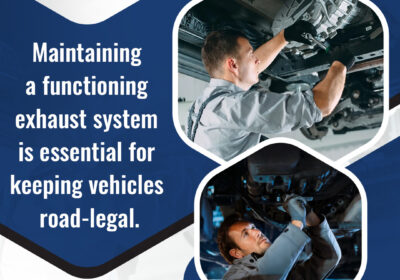When you’re out on the roads, there are certain precautions and safety tips you should always keep in mind to minimize any risks of getting into a car emergency. For example, you should always ensure your vehicle is well maintained and always keep an eye on your fuel level – these precautions alone can help you avoid any nasty surprises. Additionally, understanding what to do in a car emergency is also essential. After all, you want to be ready to take action to protect yourself and the other drivers on the road.
This blog post will highlight some essential safety tips to remember in car emergencies. So buckle up, relax, and let’s get started!
Quick Review of Key Points
If your car breaks down, it is important to remain calm and ensure your safety first. At Milstead Service Center, we prioritize your safety and can provide a safe and secure environment to evaluate the situation. Our team of certified technicians can assess the damage and suggest the best course of action. We also advise our customers to keep a first-aid kit, jumper cables, and working headlights visible from a distance in their vehicle in case of an emergency.
Stay Calm and Assess the Situation
It can be very easy to become overwhelmed in a car emergency, leading to a panic-induced response. Keeping calm and assessing the situation is essential to remaining safe and making wise decisions quickly.
To remain as cool, calm, and collected as possible, drivers should remember a few key points to help them manage their emotions. First, do not allow fear or anxiety to overtake your thought process. Instead, remain focused on the task at hand and take deep breaths if necessary. Visualize yourself through the crisis – what will you do, what will you need? Second, prioritize safety over speed by evaluating all available options before deciding. That could involve assessing any damage to determine necessary repairs or taking stock of bystanders and pedestrian hazards. Finally, think about the car emergency’s source – what happened, and why might it have occurred? Answering these questions can help you identify whether any preventative measures need to be taken for future driving scenarios.
- By staying calm and assessing the situation carefully, drivers put themselves in an optimal position to make quick decisions when faced with a car emergency. The following section outlines some critical actions drivers should take if necessary when faced with such an event.
Take Quick Action if Necessary
When dealing with car emergencies, it is vital to take quick action if necessary. Acting as soon as possible can not only be beneficial in resolving the issue but also minimize your risk of harm. Every second counts in an emergency, so it is essential to remain focused and assess the situation quickly.
For example, if you are in a dangerous flooding situation, moving out of the area quickly can help avoid any potential danger or injury from the floodwaters. If a vehicle stops running in the middle of a busy highway, assess the risks and take necessary actions, such as obtaining assistance from passersby or attempting to push the vehicle off the road. Making prompt decisions will help to ensure your safety.
On the other hand, it is equally important to pause for a moment and think before taking any action during an emergency, as it could sometimes lead to more harm or damage than good. While time is of the essence, rushing into making decisions hastily may sometimes have negative consequences and increase physical risks in certain situations, such as hazardous material spills.
It is wise to plan ahead whenever possible. An eventful plan that includes phone numbers of family members, local gas stations, and roadside assistance programs beforehand can save valuable time when dealing with unexpected car emergencies.
Keeping a cool head under pressure is paramount whether you stay put or take quick action in response to an emergency. Being level-headed during a challenging situation will help ensure all safety measures are handled properly and efficiently.
Having discussed taking quick action in car emergencies, let us move on to the next section about pulling over to a safe spot in such scenarios.
Key Points to Remember
It is essential to take quick action if necessary in a car emergency. Acting swiftly can minimize the risk of harm, while hastily taking the wrong steps could lead to more damage than good. It is best to consider the risks before making any decisions, plan ahead whenever possible, and stay level-headed under pressure. If you experience a car emergency, our team at Milstead Service Center can provide quick and reliable assistance to get you back on the road as soon as possible. Our experienced technicians can help diagnose the problem and provide the necessary auto repairs so that you can get back to your daily routine.
Pull Over to a Safe Spot
Pulling over to a safe spot is critical in car emergencies. It helps you remain focused and prepared for whatever may happen next and keeps you away from other traffic. Depending on the situation, it may be necessary to move your car out of the flow of traffic. Turn on your hazard lights while pulling over to indicate that you have an issue or something unusual is happening with your vehicle.
Pulling off the road isn’t always possible, however. Sometimes there might not be enough time or space to find a safe spot before an issue arises. In those cases, ensuring the likelihood of modifying lanes doesn’t create more hazards than good. Also, keep an eye on your rearview mirror at all times to see what is happening behind you – this can help prevent further collisions or incidents from occurring from the following traffic not seeing your slowdown as quickly enough.
Debates around when it’s best and safest to pull off the road vary depending on the circumstance and environment, so use common sense when deciding to pull over or stay put. Taking such safety precautions can help prevent further issues and provides peace of mind that any passenger within is safe and secure.
Leading into the next section about potential hazards, awareness of one’s surroundings, and taking preventive measures are key in any car emergency. Checking for potential dangers is vital before acting since they are often hard to anticipate without complete foresight of the current situation.
Check for Potential Hazards
When dealing with a car emergency, it is essential to assess the scene and check for any potential hazards that may be present before proceeding. Depending on where you are and what happened, potential risks could range from traffic to chemical spills and even wildlife. At Milstead Service Center, our experienced technicians prioritize safety first and will take all necessary precautions to ensure your well-being and that of others involved.
Here are some essential factors to consider when checking for potential hazards:
Location: Knowing your exact location is vital in case you need to call for help, but mapping out the surrounding area can also be beneficial. By understanding the environment and possible exits, you can determine whether waiting for help is safer or attempting to move the vehicle on your own.
Time: Are you in an area with minimal foot and vehicle traffic? If so, this could present a problem if no one else is around and you need assistance. Consider making arrangements ahead of time with a service provider in case of an emergency so that you know who to call as soon as possible.
Visibility: One of the most critical elements when assessing potential hazards is having good visibility. The darkness can make spotting other vehicles difficult, so it’s best to pull off onto the side or shoulder of the road if possible. Even if it’s daylight outside, keep your headlights on until the issue is resolved so other drivers know you are there.
Weather Conditions: Inclement weather can often be dangerous when driving and must be considered when assessing potential hazards. High winds, ice, rain, or fog could all threaten the safety of your vehicle. Take the necessary precautions, such as pulling over to wait out the storm or slowing down to increase stopping time should a hazard arise unexpectedly.
Ultimately, checking for potential hazards before dealing with a car emergency will help ensure you take appropriate action to remain safe during a difficult situation. As such, always consider both internal and external factors before taking any measures to handle an unwelcome car emergency.
Now that we’ve discussed how to check for potential hazards during a car emergency, let’s move on to the next step: Who can you call for help?
Who Can You Call for Help?
When facing a car emergency, knowing who and where to turn for help can be pivotal in getting the help you need and reducing the event’s impact. Most people know they can call 911 in an emergency, but not everyone knows what other options they may have.
On the one hand, calling 911 is an effective way to get assistance in a car emergency and can come with additional help, such as firefighters or EMTs, in addition to local law enforcement. This can be especially helpful in accidents resulting in serious injury or considerable property damage. That said, for minor issues, relying on 911 can risk overloading the system, which can take away from those who need urgent aid.
Fortunately, there are other options beyond calling 911. Roadside assistance is a reliable source of help to deal with any issues related to your car, such as a flat tire, dead battery, or lockout. Roadside assistance companies have professionals who are specifically trained and equipped for these situations and are generally able to respond quickly when contacted via their toll-free number. As a bonus, many car insurance plans include coverage for roadside assistance service, so this may prove to be a cost-effective option depending on your carrier.
If you are unable to get help using either of these options, consider contacting Milstead Service Center, a nearby auto repair shop that is staffed with professionals skilled in handling car-related emergencies. Our experienced technicians can provide towing services and perform repairs to get you back on the road quickly and safely. Additionally, remember that you also have access to family members or friends who may be able to drive out and provide needed assistance.
No matter which routes you choose, having the contact information ready ahead of time will make getting help much easier when it matters most. With that said, it is always wise to keep up with the preventative maintenance on your vehicle along with the knowledge of who can help should a car emergency arise. The following section will discuss what essential items you should keep in your car for instances like this.
What Essential Items Should You Keep Ready?
Having certain items ready in the case of a car emergency is essential. Aside from obvious things such as a first-aid kit and spare tire, other tools can make the experience more bearable.
For instance, keeping flares, flashlights, and reflective triangles will help alert others nearby and provide you with extra light if repair work occurs in the dark or at night. It’s also helpful to have a cellphone charger on hand in case you need to call for assistance but your battery is too low.
It’s often argued whether or not nonessential items such as blankets, bottled water, and snacks are necessary—the jury is still out on that one. On the one hand, packing these items could be a lifesaver if stuck in a bind and unable to acquire food or shelter. On the other hand, having extra weight in the trunk or backseat may hinder your vehicle’s performance over time by taking away valuable space or due to additional strain on the chassis itself.
Regardless of the debate you’re on, it’s important to remember that many car emergencies can be avoided. That brings us to our next section: tips for preventing breakdowns.
Tips for Avoiding Breakdowns
Regarding car emergencies, proactive measures can go a long way in reducing the likelihood of breakdowns. Taking preventive steps before and during your journey could save you from physical and financial losses.
At Milstead Service Center, we highly recommend regular maintenance as one of the best ways to avoid a car breakdown. Our experienced technicians can assist with oil changes, tire rotation and pressure checks, engine light scans, belt and hoses inspection, and other essential maintenance to help ensure your vehicle is running smoothly and your risk for breakdowns is minimized.
In addition to regular maintenance, driving habits make a big difference in the longevity of your vehicle. Setting limits on how quickly you accelerate or decelerate and avoiding abrupt turns and stops can reduce wear and tear on your car’s parts. Excessive speed bumps and potholes should also be avoided to protect against suspension damage. Regular visual inspections of your vehicle’s exterior are another excellent practice, as loose items can become dangerous projectiles in sudden braking or even just normal road conditions.
While some argue that preventive measures don’t always prevent breakdowns – they only delay them – following these tips may significantly extend your car’s life. Regardless, understanding what kinds of necessary preventive measures may save you time and money in the long run when faced with an emergency situation.
Now that we have discussed essential tips for avoiding breakdowns let’s move on to our final section about additional safety tips to consider during car emergencies.
Final Safety Tips to Consider During Car Emergencies
In a car emergency, remaining calm and using your best judgment is essential. Being prepared is critical to ensuring your safety in these instances. Here are some final safety tips to consider when facing a car emergency:
- Keep a first aid kit in your car. If you or your passengers are injured in an accident, having first aid is essential for providing the necessary treatment. Ensure you have all the essentials, including bandages, antiseptics, gauze, and gloves.
- Have some nonperishable items in the car – such as energy bars, snacks, and bottled water. Access to food and drink may be necessary if you find yourself stuck in an area without available assistance or quick access to medical care.
- Have contact information for available emergency services and know how to use them; this includes your local police station and nearby hospitals and trauma centers. Time is often crucial when dealing with emergencies, and having this information on hand can be helpful instead of searching for it after an incident.
- Learn basic roadside skills, such as changing a tire or jumpstarting a battery, if necessary. Keeping tools for these tasks in your trunk can also reduce stress during a roadside emergency. However, proper safety precautions should always be taken when performing mechanical work on one’s vehicle.
- Install a satellite navigation system in the car to prevent getting lost or stranded due to unfamiliar locations or terrain. The ability to pinpoint one’s exact location can help direct accredited responders toward the scene faster and safer than without this technology.
Overall, by following these safety tips and remaining mindful of potential hazards during car emergencies, one can ensure their safety should an unexpected situation arise while they are behind the wheel of their vehicle.
Common Questions and Answers
What are the most important steps to take during a car emergency?
- Pull over and turn off the engine. Safety is paramount, so the first step should be to pull over and shut the engine off to reduce the risk of fire or other hazards.
- Put on your hazard lights and call Milstead Service Center for help. This will signal potential passersby that you are in need and will make it easier for our roadside assistance team to find you quickly if you need help.
- Move yourself and any passengers to a safe place nearby. It would help if you tried to get away from the car and onto the side of the road, as far away from traffic as possible. If it’s dark outside, consider grabbing a flashlight or other warning device to warn drivers of your presence.
- Inspect the damage to your car and take note of any relevant information. Be sure to take photos of the damage, document what happened, note the exact location where the emergency occurred, and look around for any other potential hazards.
- Once in a safe location, remain at the scene until our team arrives to assist you and any necessary information has been exchanged. Never leave without ensuring everyone is safe and all the required steps have been taken before moving on.
What items should you keep in your car in case of an emergency?
It’s always a good idea to keep essential items in your car in an emergency. This list should include an extra phone charger, a flashlight with extra batteries, a first-aid kit, jumper cables, flares or reflective triangles, a tire inflator and sealant, essential tools like a wrench and pliers, an emergency car blanket, bottled water, and snacks.
At Milstead Service Center, we know that being prepared can make a big difference in an emergency situation. Having these items on hand can help you stay safe during car emergencies. For instance, the phone charger can help you contact help if your battery dies; the flashlight and flares will make it easier for others to see you as you pull off to the side of the road; the tire inflator and sealant can be used to patch up minor issues so that you can get back on the road; and the first aid kit will come in handy in case of an injury. The other items listed above will also be incredibly useful if something unexpected happens on the road. So, we highly recommend keeping these items in your car at all times.
What are some common car emergency scenarios, and how should they be handled?
Common car emergency scenarios that we can help you with at Milstead Service Center include the following:
- Flat tire: If you encounter a flat tire, the first thing to do is pull your vehicle to the side of the road, turn on hazard lights, and use road flares or reflective triangles if needed. Then, contact us to come out to replace the flat tire with your spare or tow your car to our shop for a tire replacement.
- Dead battery: If your car doesn’t start due to a dead battery, call us, and we’ll come out with jumper cables and a new battery if needed. We can also test your battery to ensure it’s working correctly.
- Overheating engine: If you notice your engine is overheating while driving, pull over immediately and shut off the engine. Give us a call, and we can come out to you to diagnose and fix the problem or tow your car to our shop for repairs.
- Brake failure: If you experience brake failure, downshift into lower gears and pump brakes to slow down your vehicle as much as possible without causing further damage or brake system failure. Then, call us, and we can come out to you to tow your car to our shop and fix the brake system.
Where can I find a reliable emergency auto repair shop?
Finding a reliable emergency auto repair shop can be daunting, especially when you’re in a pinch. However, you can take a few steps to ensure that you find a reliable shop like Milstead Service Center that can provide you with the quality service you need.
First, ask around for recommendations from family and friends. Word of mouth is often the best way to find a reliable shop, as it gives you an idea of their service. Milstead Service Center has been serving the local community since 1972 and has a reputation for quality work and excellent customer service. Milstead Service Center is open Monday through Friday from 7:00 am to 6:00 pm and on Saturdays from 7:00 am to 12:00 noon. They also offer 24/7 emergency towing services and have a comfortable waiting area.

Where can I find emergency auto repair tips?
As a Milstead Service Center customer, you can find emergency auto repair tips on our website. We have a section that provides helpful information on handling common car problems, such as dead batteries, flat tires, and overheating engines. Our experienced technicians have also created helpful video tutorials that you can access to learn how to perform basic maintenance on your car.
In addition to online resources, you can contact our team for emergency auto repair tips. Our knowledgeable staff is always available to answer any questions and provide guidance on handling car problems in an emergency.




